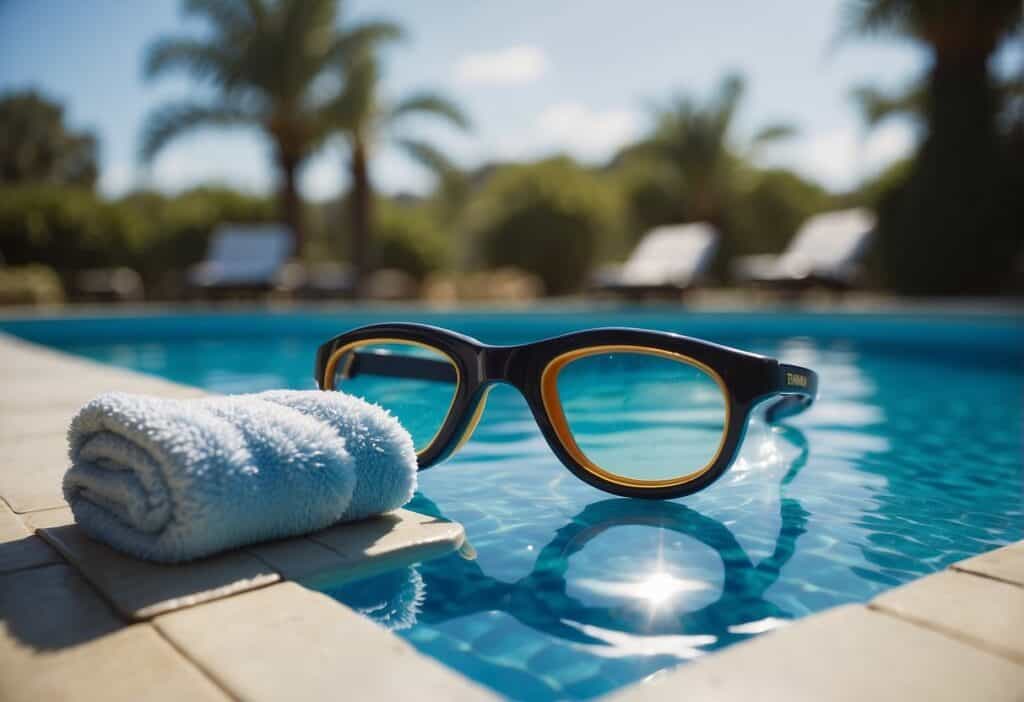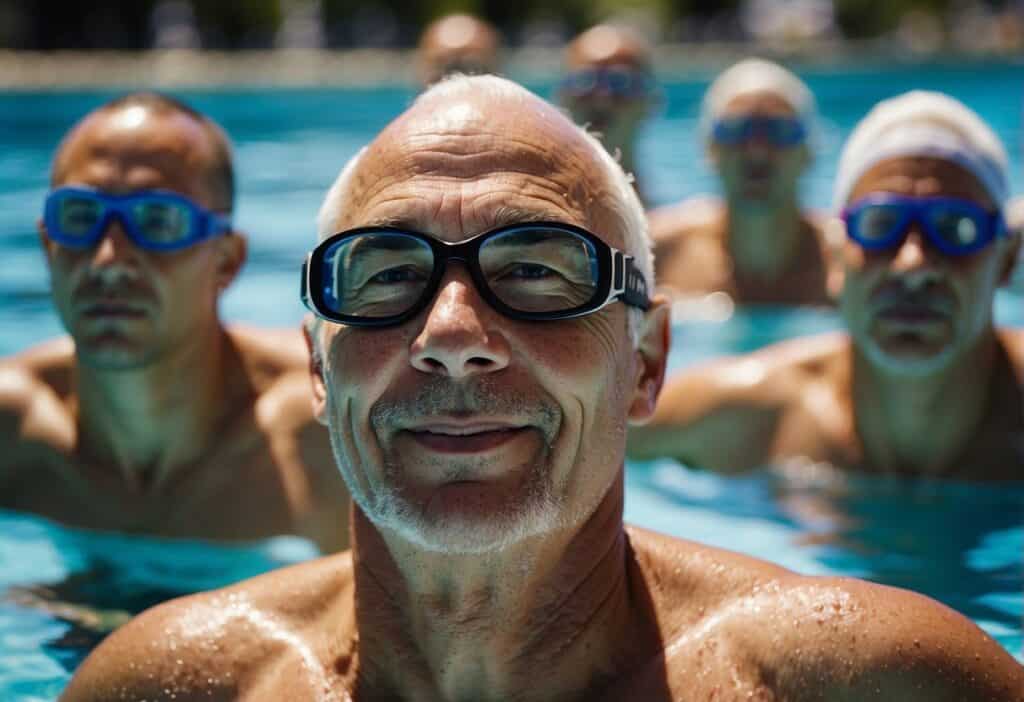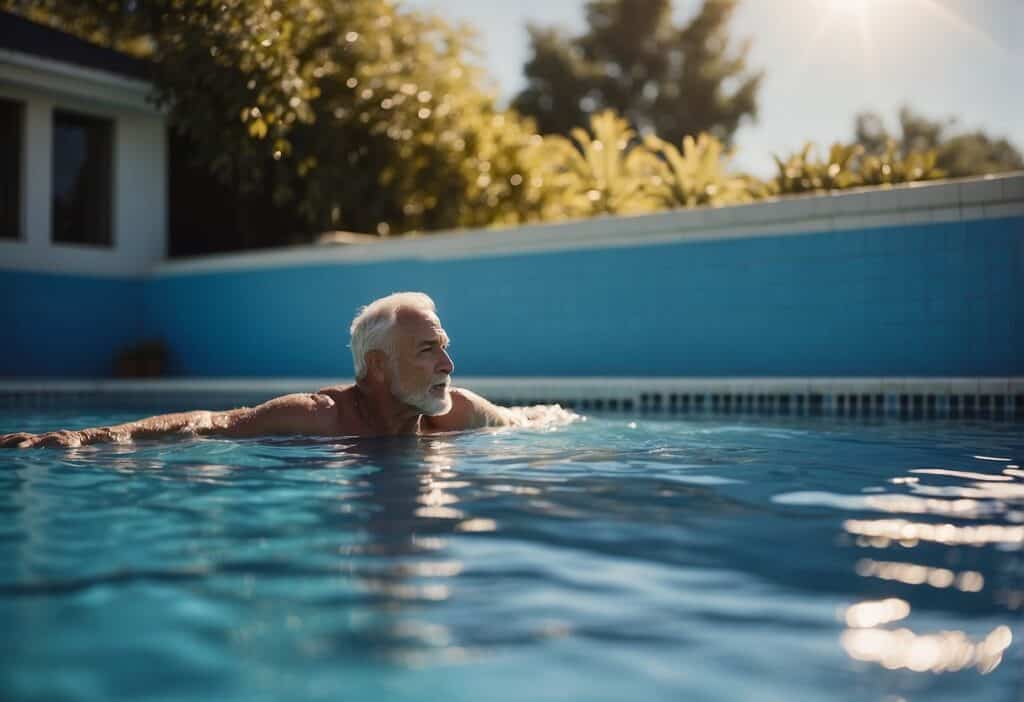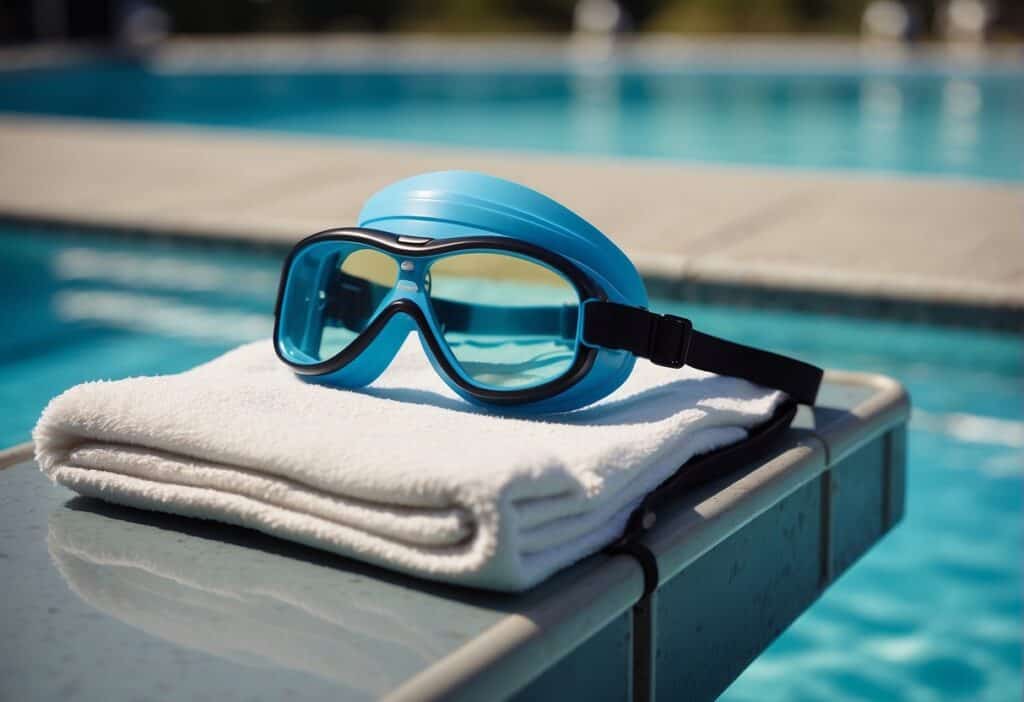Swimming is a sport with timeless appeal, and its benefits are especially relevant for men over 50 looking to maintain or improve their fitness.
Finding exercises that challenge our bodies and protect our joints from excessive stress is crucial as we age. Swimming fulfills both these criteria without the harsh impact of many other forms of exercise.

Benefits Of Swimming For Men Over 50
Swimming is particularly beneficial for men over 50, offering many health advantages. Regular swimming sessions help maintain cardiovascular health without placing undue stress on joints, as well as:
- Low-Impact Exercise: Our joints become more prone to pain and injury as we age. A low-impact activity that reduces stress on joint tissues making it an excellent choice for staying fit without the risk of impact-related injuries, is swimming.
- Whole Body Workout: When we swim, nearly every muscle group is activated, from our arms and legs to our core and back. This comprehensive involvement helps improve muscular strength and endurance.
- Cardiovascular Health: Swimming is an excellent cardio workout for our hearts. It increases heart rate and promotes cardiovascular fitness, which is essential for maintaining good health as we age.
- Increased Flexibility: Swimming can also enhance flexibility in our limbs and torsos through various strokes’ wide range of motion.
- Mental Benefits: In addition to physical health, swimming provides cognitive benefits. It is known for reducing stress levels and enhancing mood, contributing to better mental well-being.

Understanding The Aging Body And Swimming
Physiologically, our bodies’ muscle mass and bone density typically decrease as we age, making us more susceptible to injuries and osteoporosis. Men over 50 often experience a decline in flexibility and may have joint related issues such as arthritis. Heart health can also become a concern, and low-impact exercises are crucial for maintaining fitness without overstressing the body.
Swimming is an excellent aerobic exercise for enhancing cardiovascular health. It can effectively increase the heart rate while minimizing strain on the body. For men over 50, swimming can be beneficial, as it promotes better heart health without the jarring impact of other forms of exercise.

Starting a Swimming Routine
When you begin a swimming routine after age 50, it is crucial to evaluate your physical condition, establish attainable objectives, and devise a tailored swim plan that aligns with your fitness level and goals.
Assess your current fitness level, which can influence how you structure your swimming routine. If you have not been regularly active, talking to a healthcare provider is wise before diving in, pun intended.
Your goals must be realistic and achievable, as this keeps you motivated and reduces the risk of injury. For example, you aim to swim several laps, improve your swim times, or enhance your overall endurance. The key is to focus on incremental progress, which translates into better health outcomes and a greater sense of achievement.
Next, develop a swim plan. Your swim plan needs to be structured yet flexible. A good starting point could be to allocate specific days of the week for swimming and gradually increase the duration and intensity.
Remember to incorporate warm-ups and cooldowns to prepare your muscles and reduce soreness. Swimming workouts for the after-50 swimmer often include a mix of strokes and pool tools to enhance strength and stamina.
Safety and Injury Prevention
Prioritize safety and injury prevention in your swimming routines. Staying aware of your body’s limits and understanding safe practices are crucial to enjoying the benefits of swimming without unnecessary risks.
Dedicate time to warming up before jumping into the pool. Proper warm-ups can include dynamic stretches and light aerobic exercises to get the blood flowing.
Similarly, cooling down with gentle swimming or stretching helps gradually reduce our heart rate and prevent stiffness.
Be vigilant about the risks associated with swimming environments. Swim in supervised areas with lifeguards present and always have a partner.
Understanding your current health status is essential. Avoid swimming if you feel tired, overheated, or unusually cold.

Essential Swimming Gear
Having the right equipment can enhance your swimming experience and performance. A few essential items are crucial for safety and improving technique for any swimmer, especially men over 50.
A high quality pair of goggles will protect your eyes from chlorine and provide you with clear vision underwater. For the best experience, consider goggles with adjustable straps and anti-fog lenses.
Selecting the appropriate swimwear is more about function than style. Jammers provide coverage, reduce drag, and are ideal for laps and serious workouts. If you prefer comfort for casual swimming, swim briefs may be the better choice. To ensure longevity, look for materials that offer UV protection and are resistant to chlorine.
Enhance your swim sessions with accessories tailored for fitness swimmers. Consider using swim fins for lower-body workouts and hand paddles for upper-body strength.
Ear plugs can help prevent the swimmer’s ear, and a swim cap can keep your hair somewhat dry and reduce resistance.

Community and Social Aspects
Engaging in swimming activities offers us more than just physical benefits; it also provides a chance to build a vibrant social network and a sense of community. Men over 50 can especially find camaraderie and support among peers through various aquatic clubs and events.
Swimming clubs and groups cater to adults over 50, offering structured social environments where we can meet others with similar interests.
By becoming members, you gain access to scheduled group swims and social events, making it easy to form lasting friendships. The social benefits of swimming aren’t limited to the water; club gatherings and social functions contribute to a well-rounded social life.
Peer-to-peer interaction is a cornerstone of a swimming experience.
We often exchange advice and tips on techniques, training routines, and managing health as we age. This sharing enriches our knowledge and strengthens our support network. Sharing personal stories and challenges can inspire us and others to overcome obstacles and improve our overall well-being.
Final Thoughts
Understanding the changes in our bodies as we age can help us approach swimming in a way that maximizes its advantages while minimizing risks.
Adopting proper techniques and potential modifications is essential to ensure swimming remains a safe and effective exercise. Starting a routine that includes swimming can lead to remarkable improvements in health and well-being.
Frequently Asked Questions
How does swimming benefit a 70-year-old’s fitness regimen?
At 70, maintaining balance and preventing falls is crucial. Swimming helps improve muscle strength and endurance, contributing to better stability. It’s also known for enhancing cognitive function, which prevents age-related mental decline.
What are some recommended swimming workouts for men in their 60s?
Men in their 60s can benefit from a mix of swimming styles, such as freestyle, backstroke, and breaststroke, to engage different muscle groups. Interval training with periods of rest and various intensities can also be beneficial. This helps to increase stamina and manage weight.
Can you learn to swim later in life, such as after 50 years of age?
There is always time to learn to swim. Starting lessons in a safe environment can allow you to enjoy the benefits of swimming while also improving your water safety and swimming skills.






